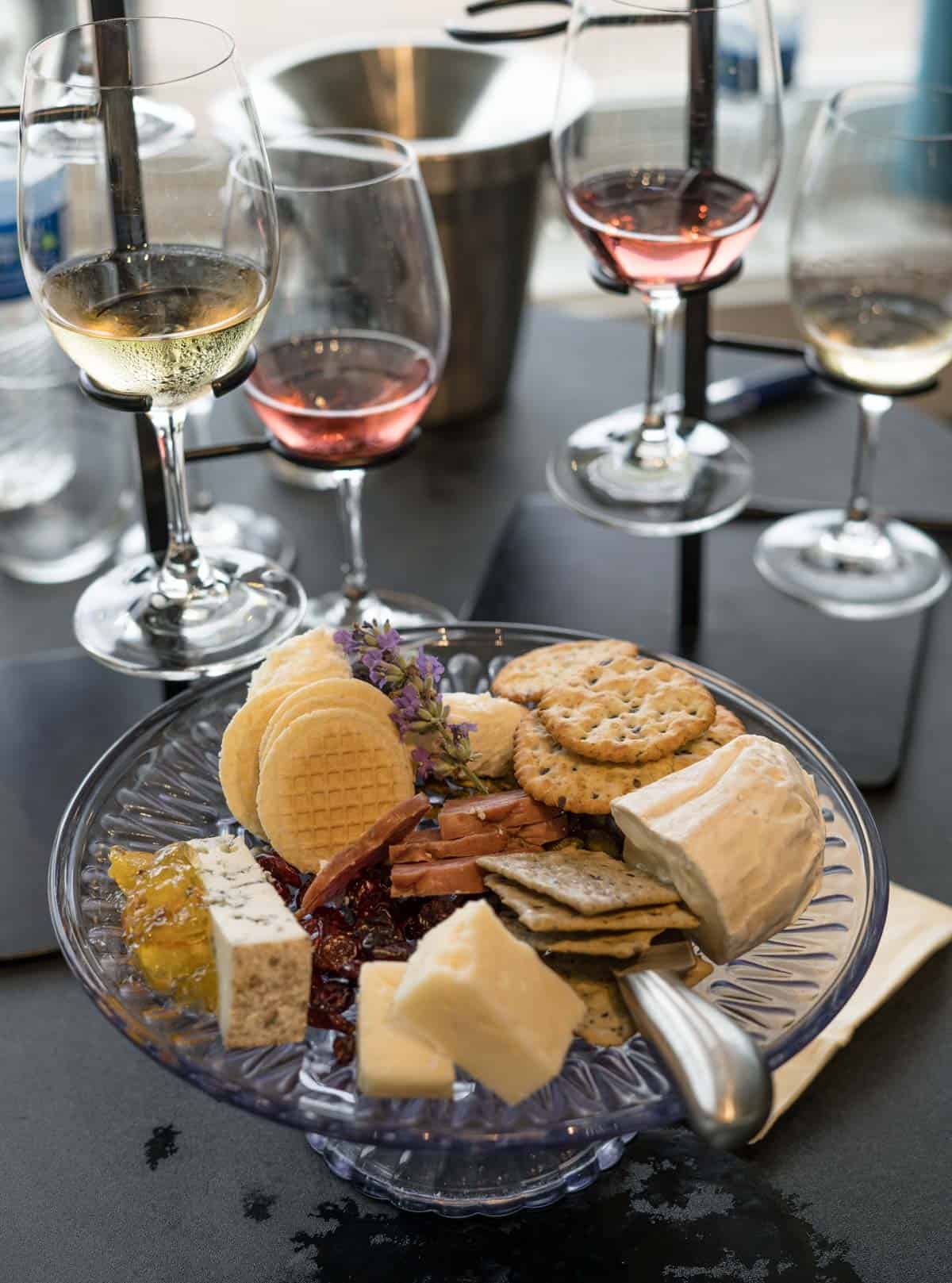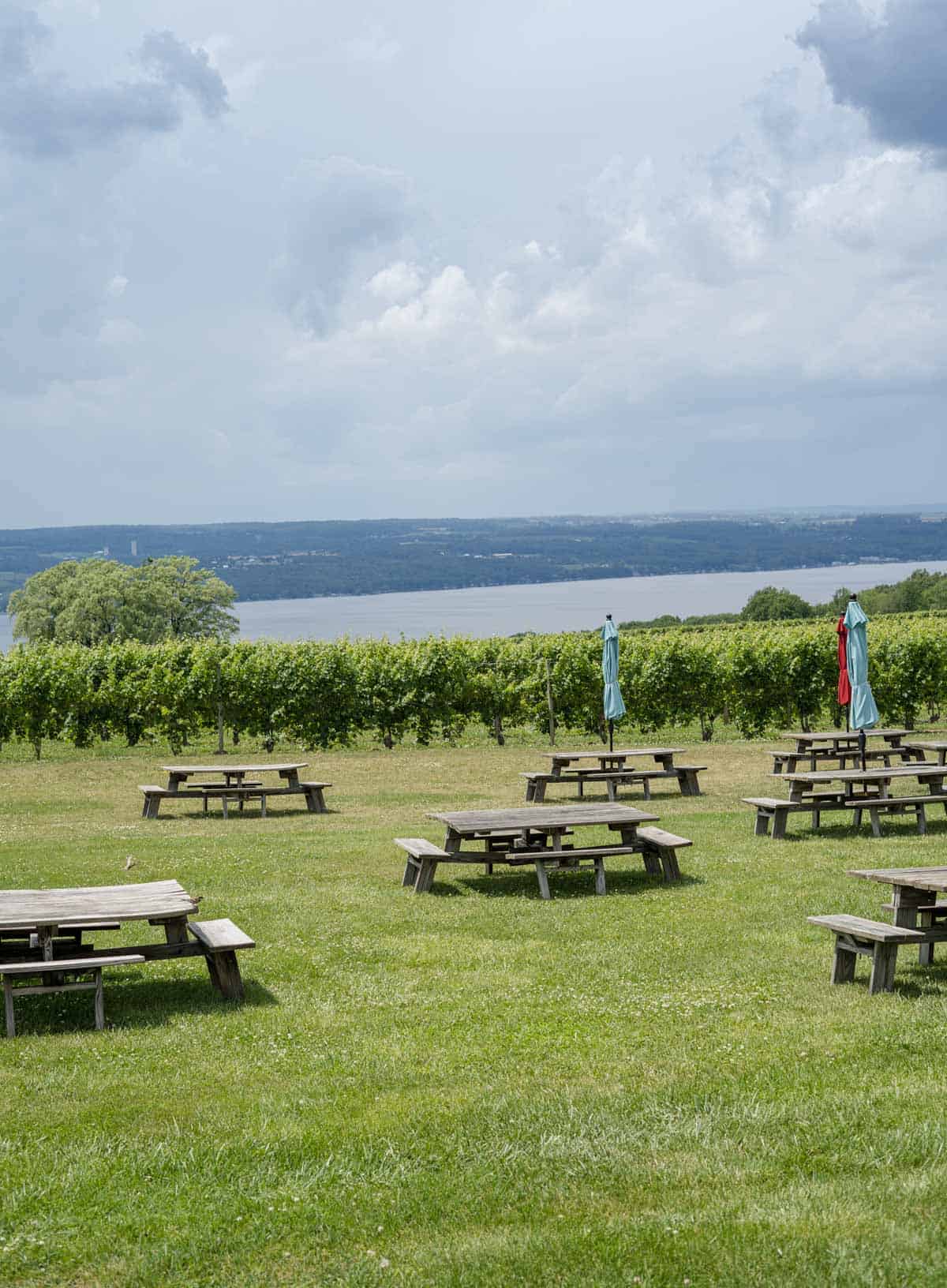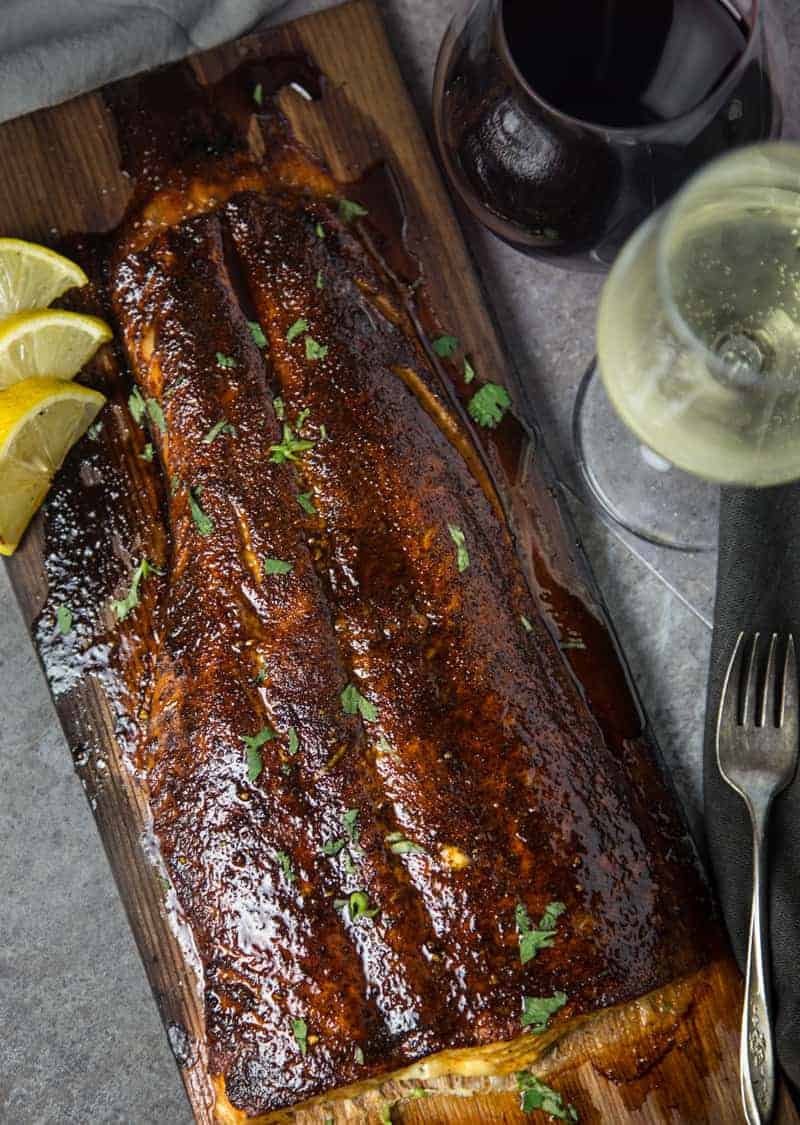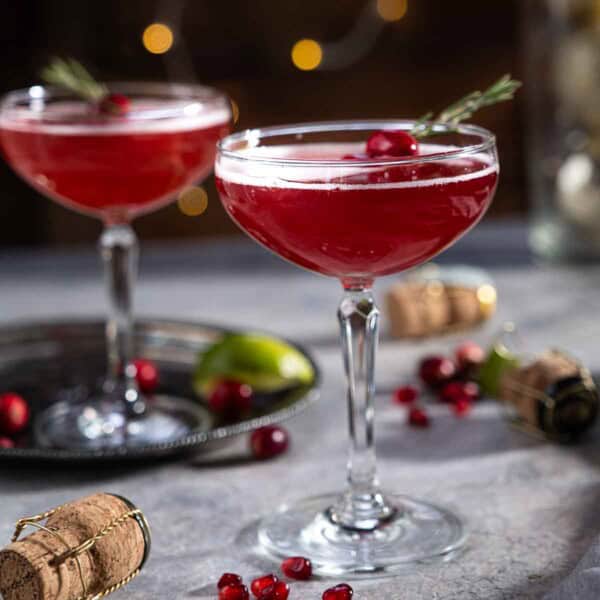Finger Lakes Wine Guide
Jul 28, 2021, Updated Jun 30, 2024
This post may contain affiliate links. Read more at our disclosure policy.
The story of the Finger Lakes Wine region in New York State involves a fascinating history of determination and pushing outside the comfort zone of a region that grew out of sweet hybrid grapes. “Plant the right grapes and focus on the regional expression of flavor,” is a theme among owners and winemakers within the Finger Lakes. Big acid and low alcohol wines are a focus, with a goal of moving beyond the idea that sweet wines define the region.

Table of Contents
Why Seek Out Finger Lakes Wines
- Dry wines are the heart of the region, from Riesling to Cabernet Franc.
- The quality of the wines are impressive for the prices offered.
- Decades of cultivating vines and winemaking has shown the ageability of wines, Rieslings especially.
- The acidity and winemaking style create the perfect balance for food pairings.
Geologic History of Finger Lakes Wines
Like most great wine regions, the geology of this region is what makes it so unique. The “Finger Lakes” describes the eleven lakes that were created by glacial activity millions of years ago. Streams flowing through V shaped valleys that flowed north became covered in thick sheets of continental glaciers. As the glaciers formed and pushed south (over and over again), the weight and movement of the glaciers carved deep valleys and hills from those steams. As the glaciers receded, large rock deposits were left creating dams that allowed the lakes to form from the meltwater.
That glacial activity also exposed limestone and other sedimentary rock that was left over from an ocean sea that once covered the area. The dense mix of soil and rock types are what make the region so diverse in terms of viticulture. Imagine a one-acre plot of land with several different soil types and drainage characteristics. You’ll find that here.
The primary lakes that produce a majority of the wine are Cayuga, Seneca, and Keuka. The depth of the lakes, Seneca Lake especially, helps to moderate the temperatures of the region in both the summer and winter seasons. Seneca Lake is 632 feet deep, and as a result of this depth it rarely freezes over (the last time the lake froze was in 1912 according to the winemakers we spoke to). The lake provides a cooling effect in the summer, which is critical in such a warm and humid environment during these months. And it provides a warming effect in the winter, also important so the roots of the vines don’t die from the extreme winter conditions.
The Lake Chelan AVA in Washington State is another wine region that features a deep lake (third deepest in the US) and glacial deposits in the soil. The similarity to the topography is an interesting parallel to the Finger Lakes Wine Region.

Without those lakes it is unlikely the climate moderation needed for modern grape growing would ever have occurred.
Viticulture History
The Finger Lakes Wine Region is considered a cool climate region with warm summers and cold winters. It seems inevitable that quality wines could be made here but that wasn’t always the perception. Travel the tasting rooms and the phrase you often hear to describe the best grapes that grow is Vinifera. This refers to the classic Vitis Vinifera grapes – or simply put, the well known international grapes that originated in Europe and the Mediterranean that we all are accustomed to in most other wine regions of the world. But before these classic grapes found a home in The Finger Lakes, it all started with native American grapes.
Early 1800s
The first vineyard showed up in the region in the early 1800s. Throughout the mid to late 1800s the wines from the region were made from predominantly sweet hybrid grape varietals that appealed to the palate of the region at the time.
It wasn’t until Dr. Konstanin Frank arrived in the 1950s that the path toward vinifera, or the planting of classic European varieties of grapes, began. And while the visionary perspective of Dr. Frank seems so natural today, when he first arrived, his determined goal of making world class wines was met with a lot of skepticism and opposition. In 1958 he took it upon himself to plant and make wines based on his vast experience of winemaking coming from the Ukraine. As the quality and popularity of his wines expanded, the regional community began to realize the level of quality wines that that could be produced beyond the sweet hybrids that were so common.
The 70s
This paved the way for more innovators to come, or those who would reinvest into the region throughout the 1970s and 1980s, like Hermann Wiemer and Bill Wagner, continuing to plant riesling, chardonnay, cabernet franc, gewürztraminer, pinot noir, and other vinifera grapes. With these early adopters traveling to the region, and generational farmers plating vinifera grapes, more wineries began to emerge with a specific focus on making dry, age-worthy wines that rivaled some of the best in the world.
The 90s and Today
The 1990s saw more investors move to the region who saw its potential. Scott Osborn, a Rochester native who worked for years in the California wine industry, tasted some Finger Lakes Chardonnay and knew that this was the place wanted to make wine. He partnered with Andy Hale and took over ownership of Fox Run Vineyards, which remains one of the best known producers of quality wines in the area.
Today as you travel the lakes, you see an entire economy that has emerged, from microbreweries, to farm to table restaurants, outdoor activities, water sports, and lodging supporting the 140+ wineries that make up the region. It’s not just about the wines. There’s something for everyone here.
The Wines
To answer the underlying question of whether the wines are good, the answer is yes. But as you travel the region, like any wine region, some wines and some winemakers stand out more than others.
Riesling
The Rieslings of the Finger Lakes wine region are as diverse as the soil, and the regions flagship grape. The predominant characteristics of the Riesling we most liked are dry to semi-dry, acid driven wines with crisp fruit and lower alcohol. Tasting through some older vintages, they also develop characteristics of petrol, tropical fruit, and balanced acidity. These wines can be age worthy and very food friendly.
Chardonnay
Chardonnay is among the most planted grapes within the region in terms of acreage. We have said before the Chardonnay is like the chicken of wine, with flavors that can vary based on wine making style. The better Chardonnays around the lakes still reflected the higher acidity, which was a theme amongst most of the wines from this region. Think bright fruit with lemon, and some lemon peel, with medium body, and a lingering bright acidic finish. Oak aging also helped to offset some of the high acid in some cases.
Cabernet Franc
The Cabernet Francs stand out because of the many varieties of wine tasted, these tended to take on their own expression of local terroir. The Cab Francs of the Finger Lakes tend to have relatively low alcohol (ranging from 11% – 13%), and bright fruit flavors.
Unlike the Loire, Bordeaux, or Washington representations of this grape, the Finger Lakes Cabernet Francs still had tannin, but much brighter and lighter fruit flavors, with some vanilla from oak barrel aging, and earthiness. Think of them as more of a lighter, summer appropriate red wine.
Would you like to save this?
Sparkling Wine
While there may not be a large scale of sparkling wine producers (it’s really expensive to produce), there are a few making outstanding bubbly in the style of Méthode Champenoise, resulting in crisp, acidic wines, with great mouthfeel. The stand out sparkling wine for us was the Dr. Konstantin Frank Blanc de Noir.
Ice Wine
The unique cool climate also allows for very fine ice wines. These are wines, most commonly Riesling, that were left on the vine through frost and winter, to increase sugar levels and are then harvested when frozen, and pressed into a sweet complex wine.
These wines have characteristics of honey and tropical fruit on the nose, with a big acidic mouthfeel and thick, almost syrupy texture, that finished with more notes of honey, vanilla, and tropical fruit.

Gewürztraminer
One surprise for us was the quality and balance of this interesting grape variety. Often times Gewürztraminer can come across soapy, and overly floral to the point of potpourri. But, again, the acid focus and balance from various winemakers here really showcased quality wines with lemon and tropical fruit on the nose, to a finish that lingers while still remaining on the dry side.
Other Varieties
There were other varietals planted with various levels of quality, including, Pinot Noir, Merlot, and Pinot Gris. But one that seems promising is Grüner Veltliner. You’ll still find several examples of French-American and native varieties as you travel through the region as well.
Finger Lakes Wineries of Note
While exploring the various lakes, a few wineries stand out for both the history, quality of wines, and ability to experience the sense of place that the Finger Lakes has to offer in their tasting rooms.
Keuka Lake
The smaller of the three lakes we travelled through, the steep slopes and poignant views were the most dramatic.
- Dr. Konstantin Frank – Not only is the historical relevance of the winery important, the wines are as good as the story behind them. Be sure to try their sparkling wine made in the Méthode Champenoise style. These delicious sparkling wines are hard to find outside the in-person tasting experience.
- Weis Vineyards – Weis is a great example of the newest generation of winemaking and style. Hans Peter Weis comes from a family of winemaking from Germany and creates wines that are balanced, acidic, and very much food friendly. His modern tasting room also provides spectacular views of the lake.

Seneca Lake
The largest and deepest of the lakes. The drive around Seneca may take a while, but it is scenic while also providing a great example of the local economy. You’ll see a large number of wineries, breweries, and farm stand markets. As you start on the north end of the lake, you see relatively flat and gradual slope to the water. But as you travel further south, you begin to see the hills get larger, the slopes get steeper, and the exposed limestone and shale.
- Wagner Vineyards – The five generations of winemaking and vineyard management is apparent when tasting through their wines. While they have a number of hybrid grapes, the focus on the vinifera was apparent, and the wines were delicious and prices affordable. John Wagner knows what he wants in the bottle and you can taste it in clean, crisp, and focused wines.
- Lamoreaux Landing Wine Cellars – Just next door to Wagner, one of the stand out experiences is tasting the stainless steel Cabernet Franc side by side with one produced in oak. It really showcases the fruit and characteristics that come from great vineyard practices and an attention to bringing both the fruit and acidity of the wine forward.
- Fox Run Vineyards – Be sure to stop at Fox Run and taste through the beautiful wines made by winemaker Peter Bell. His expertise from decades of winemaking is apparent with each sip of wines that display acidity, balance, and fruit. Tasting some of the older vintages also demonstrates the age-ability of Fox Run wines.
- Anthony Road and Ravines Wine Cellars are also a couple favorites.

Cayuga Lake
Cayuga Lake is closer to Syracuse and the furthest east of the three lakes we visited. While not as large and deep as Seneca, the influence of the water is still just as important.
- Bet The Farm – A small boutique winery with a passion for food and wine. The wines are often paired with locally sourced provisions to showcase the range of food and wine pairings.
- Sheldrake Point Winery – Owner Chuck Tauck is a wealth of information with generations of experience in the region. He shared with us how he and the team are always challenging themselves to learn about the best places to plant to get the best expression of the wines in the bottle. The go so far to have a “Beta” series of wines that are a limited series of wine styles to test both the wine making and the public reception of various styles. Ask about it if you go!
Food Pairings
As we tasted through the wines, the most common theme was how well the wines pair with food. The acid focus gives many opportunities for pairing both the whites and reds.

Pairing with Finger Lakes Riesling
- Smoked Buffalo Chicken Wings
- Smoked Salmon Dip
- Maple Chipotle Grilled Cedar Plank Salmon
- Jalapeño Kettle Chip Crusted Smoked Pork Tenderloin
- Grilled Peach Crostini
- Pulled Pork Sliders with Grilled Pineapple Coleslaw
- Grilled Chipotle Shrimp
- Thanksgiving Dinner
Other Finger Lakes Wine Resources
The following are additional reading material and resources for the Finger Lakes Wine Region.
- Finger Lakes Wine Alliance – Maps of the various wine trails and history of the region.
- Summer in a Glass: The Coming of Age of Winemaking in the Finger Lakes by Evan Dawson. This is a great book telling the fascinating stories of individual winemakers and owners. It also provides a wonderful history of some of the leaders in the region. You feel as if you are at the table with Dawson as he’s sharing these stories with history and emotions behind them.




















